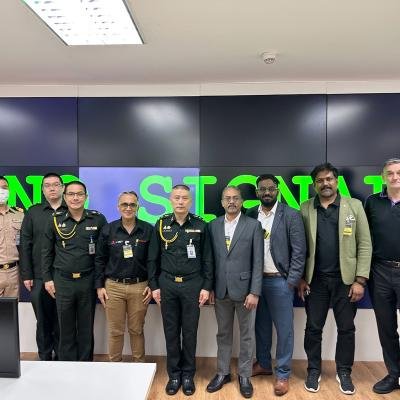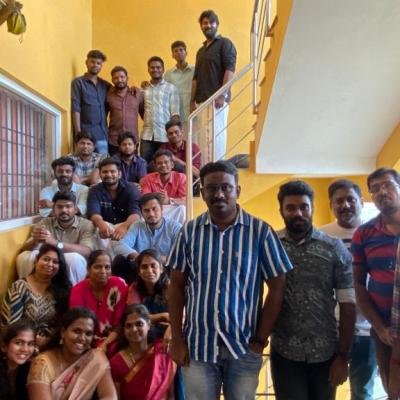The software development world just received another stark reminder of how critical our tools have become to the security of the digital ecosystem. Cybersecurity researchers recently disclosed a remote code execution (RCE)vulnerability in Microsoft’s Visual Studio Code (VS Code)—one of the most widely used integrated development environments (IDEs) on the planet.
The flaw, tracked as CVE-2025-38216, isn’t just a niche bug buried in obscure configurations. It’s a direct threat to the integrity of development pipelines and software supply chains, potentially impacting millions of developers and organizations worldwide. With over 15 million monthly active users of VS Code according to Microsoft, the scale of exposure cannot be underestimated.
This incident underscores a growing reality: development environments themselves are now high-value targets for cybercriminals. Attacks are shifting from traditional infrastructure breaches to the very tools developers use daily. Let’s explore why this vulnerability matters, what it tells us about evolving cyber risks, and how organizations can secure themselves with proactive measures.
What Makes This Vulnerability So Dangerous?
Unlike traditional endpoint vulnerabilities, this flaw requires minimal user interaction to be exploited. Researchers found that attackers could trick developers into opening a malicious workspace configuration, leading to remote code execution.
Key concerns include:
- No obvious red flags: The exploit bypasses common security warnings, making it highly deceptive. Even cautious developers could fall victim.
- Default installations impacted: Unlike some bugs that require unusual configurations, this vulnerability affects the default installation of VS Code, putting nearly all users at risk.
- Gateway to supply chain compromise: Once an attacker hijacks a developer’s IDE, they gain a pathway to insert malicious code into applications or dependencies—potentially cascading across thousands of downstream users and organizations.
This isn’t just about a single developer losing control of their environment—it’s about the domino effect across entire ecosystems.
Why Development Tools Are Now Attack Surfaces
The modern software supply chain is deeply interconnected. Developers rely on package managers, shared libraries, APIs, and third-party integrations. According to Sonatype’s 2024 State of the Software Supply Chain report,
96% of modern applications use open-source components, and nearly 1 in 8 open-source downloads contain known vulnerabilities.
When attackers compromise a development environment, they aren’t just targeting one company—they’re embedding themselves into the veins of the digital ecosystem. We’ve already seen high-profile examples:
- SolarWinds (2020): A compromised build system led to malicious updates being distributed to over 18,000 customers, including government agencies.
- Codecov (2021): Attackers modified a developer tool’s script, leaking credentials from thousands of organizations.
- PyPI & npm incidents (2022–2024): Malicious packages were uploaded to trusted repositories, downloaded by unsuspecting developers worldwide.
The VS Code flaw aligns with this trajectory—threat actors don’t need to attack production systems directly if they can poison the pipeline at its source.
The Rising Cost of Supply Chain Attacks
Supply chain attacks are no longer rare “advanced” techniques. They are becoming mainstream. According to the ENISA Threat Landscape Report 2024, supply chain compromises grew by 43% year-over-year, with 62% of affected organizations suffering downstream breaches.
The financial toll is equally staggering:
- IBM’s Cost of a Data Breach Report 2024 found that breaches involving supply chain compromise cost on average $4.63 million—higher than traditional breaches due to their extended impact.
- Gartner predicts that by 2026, 60% of organizations will experience at least one software supply chain attack, up from 15% in 2021.
In other words, the VS Code vulnerability isn’t an isolated technical glitch—it’s a symptom of a broader trend where attackers exploit the weakest link: trust in development ecosystems.
How Organizations Should Respond
At DigiAlert, we believe this incident is a wake-up call for organizations of all sizes. Traditional perimeter security is no longer enough. Securing development environments is now a board-level priority.
Here are practical steps organizations should take:
1. Harden Development Environments
- Disable auto-execution of workspace configurations unless explicitly required.
- Apply the latest VS Code security patches immediately.
- Restrict extensions to vetted and approved sources.
2. Shift Security Left with DevSecOps
- Integrate security checks early in the CI/CD pipeline.
- Use automated scanning tools for code, dependencies, and container images.
- Train developers to recognize social engineering attempts targeting IDEs and repositories.
3. Leverage Threat Intelligence
- Monitor for suspicious activity within developer environments.
- Subscribe to threat feeds focusing on supply chain attacks.
- Use real-time alerts to catch anomalies before they spread downstream.
4. Implement Zero Trust for Development Pipelines
- Enforce strong authentication and MFA for developer accounts.
- Segment build environments from production.
- Audit code commits and package imports continuously.
5. Partner with Experts
Supply chain security is complex. Collaborating with specialized cybersecurity providers like DigiAlert ensures continuous monitoring, proactive threat detection, and incident response readiness.
Beyond VS Code: The Bigger Picture
The VS Code vulnerability is just one example of the evolving battleground of cybersecurity. Attackers are:
- Exploiting identity systems (as seen in recent attacks against Microsoft Entra ID).
- Targeting cloud environments where code is built, tested, and deployed.
- Leveraging AI-driven malware that adapts faster than traditional defenses.
For organizations, this means that security cannot stop at production firewalls. Development, testing, staging, and CI/CD environments are equally critical.
According to GitHub’s 2024 Octoverse Report, there are over 94 million developers worldwide contributing to open-source projects. A vulnerability in a popular tool like VS Code doesn’t just affect enterprises—it impacts the global digital commons.
How DigiAlert Helps Secure the Supply Chain
At DigiAlert, we’ve long emphasized that software development is the new frontline of cybersecurity. Our services are designed to provide:
- Managed Detection & Response (MDR): Continuous monitoring of developer environments to catch anomalies in real time.
- vCISO Services: Strategic guidance to integrate DevSecOps practices and align with compliance frameworks like ISO 27001 and SOC 2.
- Incident Response: Rapid containment and recovery in case of a supply chain compromise.
- Training & Awareness: Helping developers recognize risks in their tools, packages, and workflows.
By combining proactive monitoring with strategic resilience, DigiAlert ensures organizations aren’t just reacting to vulnerabilities like CVE-2025-38216, but building cyber resilience into their entire software lifecycle.
The Question Every Organization Must Ask
The disclosure of the VS Code vulnerability forces us to confront a difficult question:
If attackers compromise your development pipeline tomorrow, how prepared are you to detect, contain, and recover?
The answer requires more than patching—it requires a mindset shift. Security must move beyond the perimeter and extend into the heart of development itself.
Final Thoughts
The VS Code flaw (CVE-2025-38216) is not just a bug—it’s a warning signal. Development environments are no longer safe by default. They are prime targets, and securing them must be a top priority for every organization that builds software.
At DigiAlert, we see this incident as proof of a growing reality: cybersecurity is not a one-time fix, but a continuous discipline. The organizations that thrive in this landscape are those that embrace proactive monitoring, threat intelligence, and resilient supply chain practices.
The future of cybersecurity will be defined by how well we protect the pipelines that build the digital world.
For ongoing insights into digital risk monitoring, DevSecOps, and cybersecurity best practices, follow DigiAlert and VinodSenthil.







